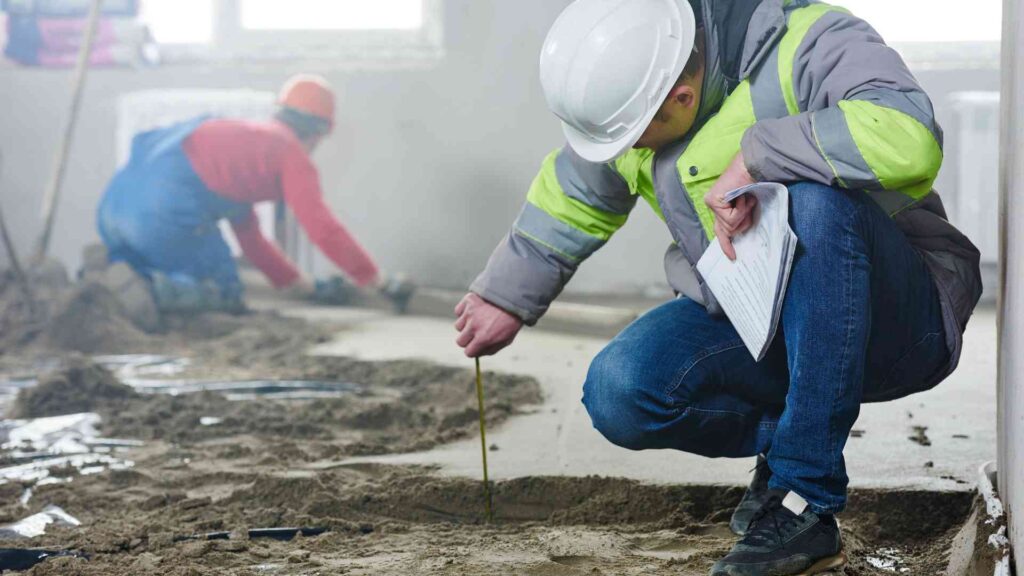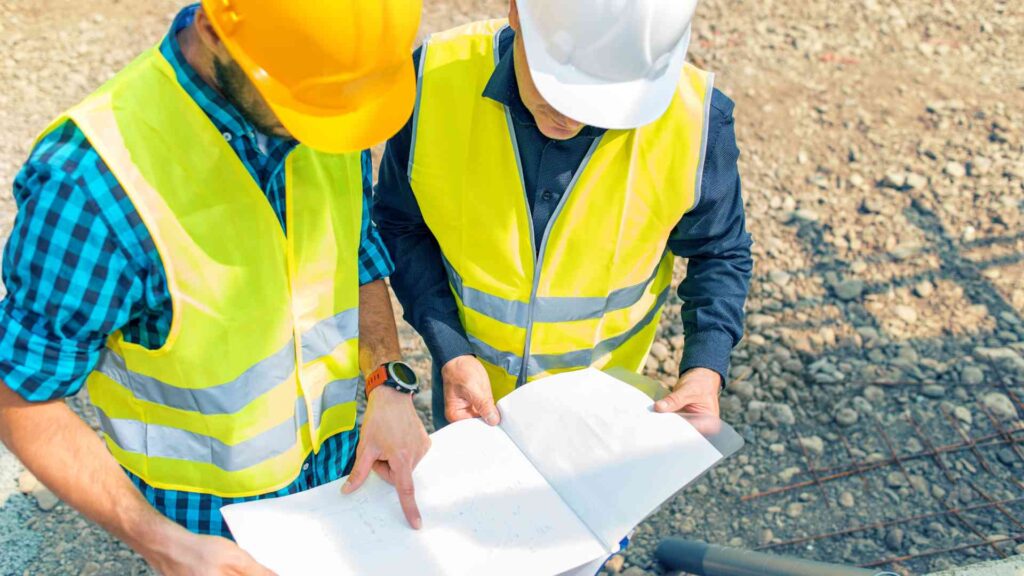When it comes to building in Arizona’s harsh climate, choosing the right concrete is of utmost importance. Buckeye Concrete, a leading provider of concrete solutions, understands the unique challenges that this climate presents. In this article, we will explore the impact of Arizona’s climate on concrete and discuss the factors to consider when selecting the appropriate concrete for your project. We will also provide expert tips from Buckeye Concrete on concrete selection and maintenance, as well as common mistakes to avoid. Additionally, we will take a look at the future of concrete technology in Arizona’s climate, including innovations and sustainability considerations.
Understanding Arizona’s Unique Climate
Arizona is known for its extreme weather conditions, characterized by scorching summers and dry, arid air. These climatic factors pose significant challenges to the durability and longevity of concrete structures. By understanding how Arizona’s climate affects concrete, we can make more informed decisions when choosing the right concrete for our projects.
The Impact of Temperature Extremes on Concrete
Arizona’s temperature extremes, with summer temperatures reaching over 100 degrees Fahrenheit, can have a detrimental effect on concrete. The excessive heat can lead to rapid evaporation of moisture, causing the concrete to cure too quickly and resulting in lower strength and increased cracking. On the other hand, sudden drops in temperature, especially during the winter months, can cause the concrete to contract, potentially leading to cracking and other structural issues.
During the scorching Arizona summers, the intense heat can be unforgiving to concrete structures. The high temperatures can cause the surface of the concrete to become extremely hot, making it uncomfortable to walk on barefoot. In some cases, the heat can even cause the concrete to expand, leading to uneven surfaces and potential tripping hazards.
On the flip side, the winter months in Arizona can bring unexpected temperature drops, especially during the night. These rapid fluctuations in temperature can cause the concrete to contract and expand repeatedly, putting stress on the structure. Over time, this stress can weaken the concrete and lead to cracks, compromising its integrity.
How Arizona’s Dry Climate Affects Concrete Durability
In addition to temperature extremes, Arizona’s dry climate can also pose challenges to concrete durability. The lack of moisture in the air can cause the concrete to lose moisture quickly during the curing process, leading to shrinkage and potential cracking. Furthermore, the dry air can also result in increased dust and debris accumulation on the concrete surface, requiring regular maintenance to prevent staining and deterioration.
Arizona’s arid climate, with its low humidity levels, can cause concrete to dry out faster than in more humid regions. This rapid drying can lead to surface cracks and reduced overall strength. To combat this, special curing techniques and additives may be necessary to ensure the concrete retains enough moisture during the curing process.
Moreover, the dry air in Arizona can also affect the appearance of concrete surfaces. Dust and debris particles are more likely to settle on the concrete, creating a layer of grime that can be difficult to remove. Regular cleaning and maintenance are essential to keep the concrete looking its best and to prevent long-term damage.
Despite the challenges posed by Arizona’s unique climate, advancements in concrete technology have allowed for the development of specialized concrete mixes that are better suited to withstand the extreme weather conditions. These mixes often incorporate additives and reinforcements to enhance durability and minimize the negative effects of temperature fluctuations and dryness.
The Importance of Choosing the Right Concrete
When it comes to construction projects in Arizona, selecting the appropriate concrete is of utmost importance. The unique challenges presented by the state’s climate require careful consideration of factors such as concrete composition, strength, and durability to ensure optimal performance and longevity.
Arizona’s climate is known for its extreme temperatures, ranging from scorching hot summers to chilly winters. This means that the concrete used in construction must be able to withstand these temperature fluctuations without compromising its structural integrity. Choosing the right concrete can make all the difference in ensuring that your project stands the test of time.
Factors to Consider When Selecting Concrete
When it comes to selecting concrete, there are several factors that need to be taken into account. One of the most important considerations is the specific requirements of the project. Factors such as load-bearing capacity, anticipated traffic, and exposure to harsh weather conditions all play a role in determining the type of concrete that should be used.
For example, if you’re constructing a bridge that will be subjected to heavy loads and constant traffic, you’ll need a high-strength concrete that can withstand the weight and stress. On the other hand, if you’re building a residential driveway, a standard concrete mix may be sufficient.
In addition to project requirements, it’s also crucial to consider the local climate and environmental factors. Arizona’s arid climate, with its hot and dry conditions, can be particularly challenging for concrete. The intense heat and lack of moisture can cause concrete to shrink and crack if not properly formulated.
By taking into account the specific climate conditions, you can choose a mix design that incorporates additives and supplementary cementitious materials to enhance the durability and performance of the concrete. These additives can help mitigate the effects of temperature changes, moisture, and chemical exposure, ensuring that your concrete remains strong and resilient.
The Role of Concrete Composition in Durability
When it comes to the durability of concrete, the composition plays a significant role. The quality of the aggregates, cement, and supplementary cementitious materials used can greatly impact the strength and resistance of the concrete.
Aggregates, such as sand and gravel, provide the bulk of the volume in concrete and contribute to its overall strength. Using high-quality aggregates that are properly graded and free from impurities can help ensure that the concrete is strong and durable.
Cement, the binding agent in concrete, is another crucial component. The type and quality of cement used can affect the strength and durability of the concrete. In Arizona, where temperature fluctuations are common, it’s important to use a cement that is suitable for the climate and can withstand the extreme conditions.
Supplementary cementitious materials, such as fly ash or slag, can also be added to the concrete mix to enhance its performance. These materials can improve the workability, durability, and resistance to chemical attack of the concrete, making it more suitable for Arizona’s climate.
At Buckeye Concrete, we understand the importance of selecting the right concrete for Arizona’s unique climate. That’s why we use advanced mix designs that are specifically formulated to meet the demands of the state’s challenging environment. Our concrete is designed to provide exceptional durability and performance, ensuring that your project stands strong for years to come.
Expert Tips from Buckeye Concrete
As industry experts, Buckeye Concrete has deep insights into concrete selection and maintenance for Arizona’s harsh climate. Their knowledge and experience can guide homeowners, builders, and contractors in making informed decisions.
Insights into Concrete Selection for Arizona Homes
Choosing the right concrete for homes in Arizona requires an understanding of the unique climate and the specific needs of each project. Buckeye Concrete provides comprehensive guidance on selecting the most suitable concrete mix, taking into account factors such as the location, intended use, and budget.
Professional Advice on Concrete Maintenance in Harsh Climates
Sustaining the durability of concrete structures in Arizona’s climate requires proper maintenance. Buckeye Concrete offers professional advice on maintenance practices that can protect against moisture, temperature fluctuations, and other environmental factors. Regular inspections, sealing, and cleaning are crucial to ensure the longevity of your concrete investment.
Common Mistakes in Concrete Selection and How to Avoid Them
While selecting the right concrete is essential, it is equally important to be aware of common mistakes that could compromise the performance and longevity of your concrete structures. By avoiding these pitfalls, you can ensure a successful and durable construction project in Arizona’s harsh climate.
Misconceptions about Concrete Strength and Durability
One common mistake is assuming that all concrete is the same in terms of strength and durability. It is important to choose a concrete mix that meets the specific requirements of your project, considering factors such as anticipated loads, exposure to weather elements, and intended lifespan.
Preventing Concrete Damage in Arizona’s Climate
To prevent damage to concrete in Arizona’s climate, it is necessary to take proactive measures. This includes proper curing techniques, utilizing concrete additives that enhance strength and crack resistance, and implementing effective drainage systems to prevent water accumulation around the concrete structures.
The Future of Concrete in Arizona’s Climate
As research and technology continue to advance, the future of concrete in Arizona’s harsh climate looks promising. Innovations in concrete technology are focused on enhancing durability, sustainability, and performance.
Innovations in Concrete Technology for Harsh Climates
Researchers and manufacturers are developing new concrete technologies that are specifically designed to withstand the challenges of Arizona’s climate. These innovations include the use of advanced admixtures, fiber-reinforced concrete, and self-healing concrete to improve strength, crack resistance, and long-term performance.
Sustainability Considerations in Concrete Selection
As sustainability becomes increasingly important, selecting environmentally friendly concrete options is crucial. Buckeye Concrete leads the way in providing sustainable concrete solutions, reducing carbon emissions, and utilizing recycled materials, while maintaining uncompromised strength and durability.
In conclusion, choosing the right concrete for Arizona’s harsh climate requires careful consideration of the unique challenges posed by the climate. Factors such as temperature extremes, dryness, and the specific requirements of your project all play a role in selecting the optimal concrete mix. Buckeye Concrete offers expert guidance and innovative solutions to ensure the durability, performance, and sustainability of your concrete structures in Arizona’s challenging environment.


